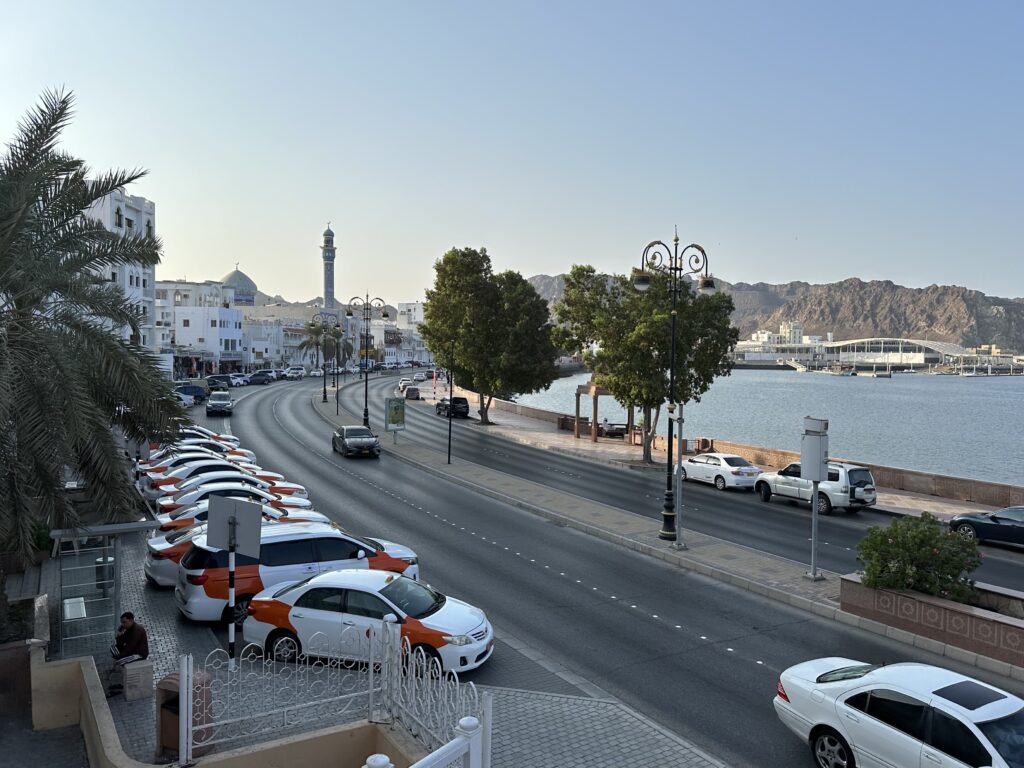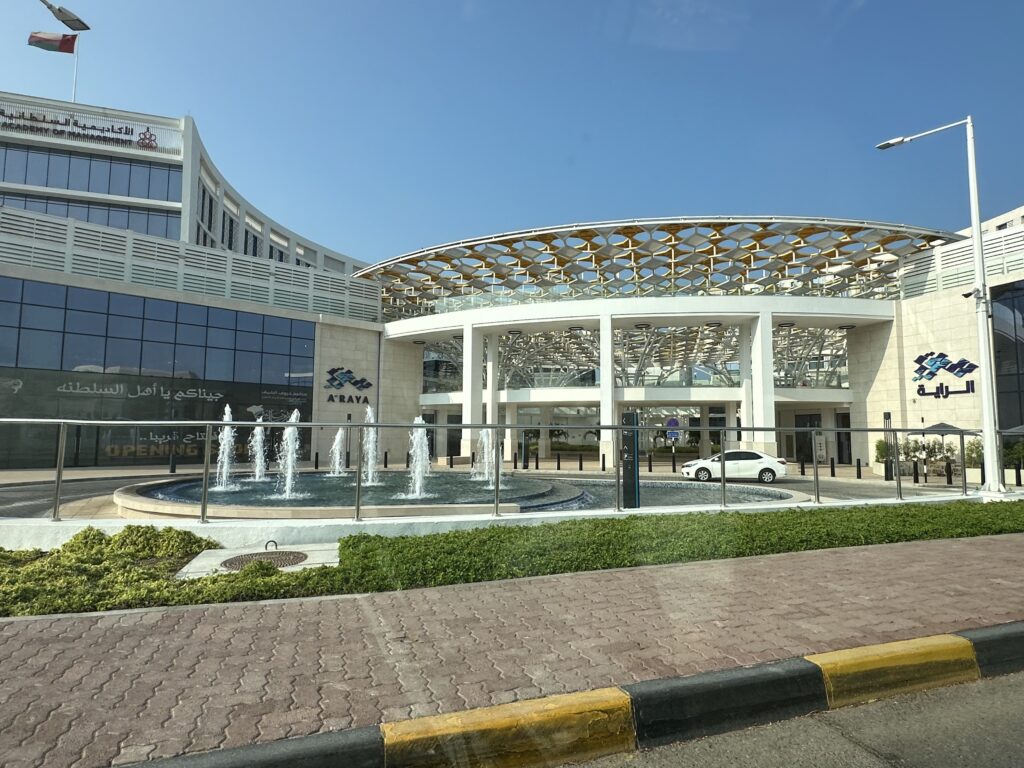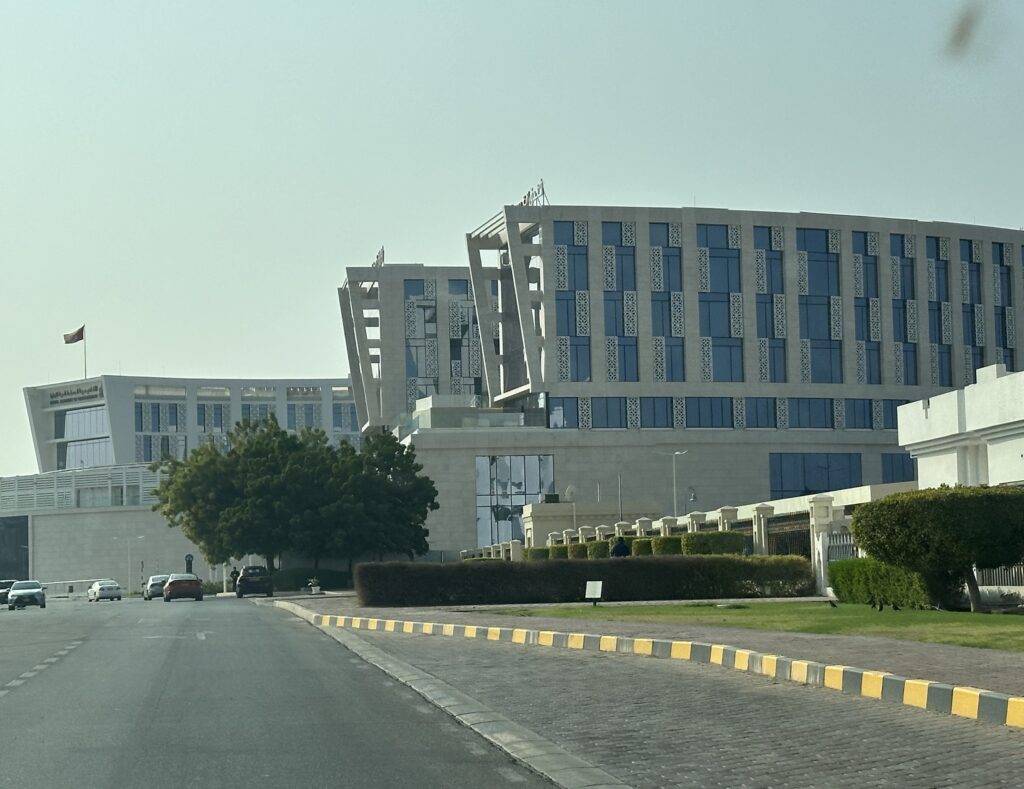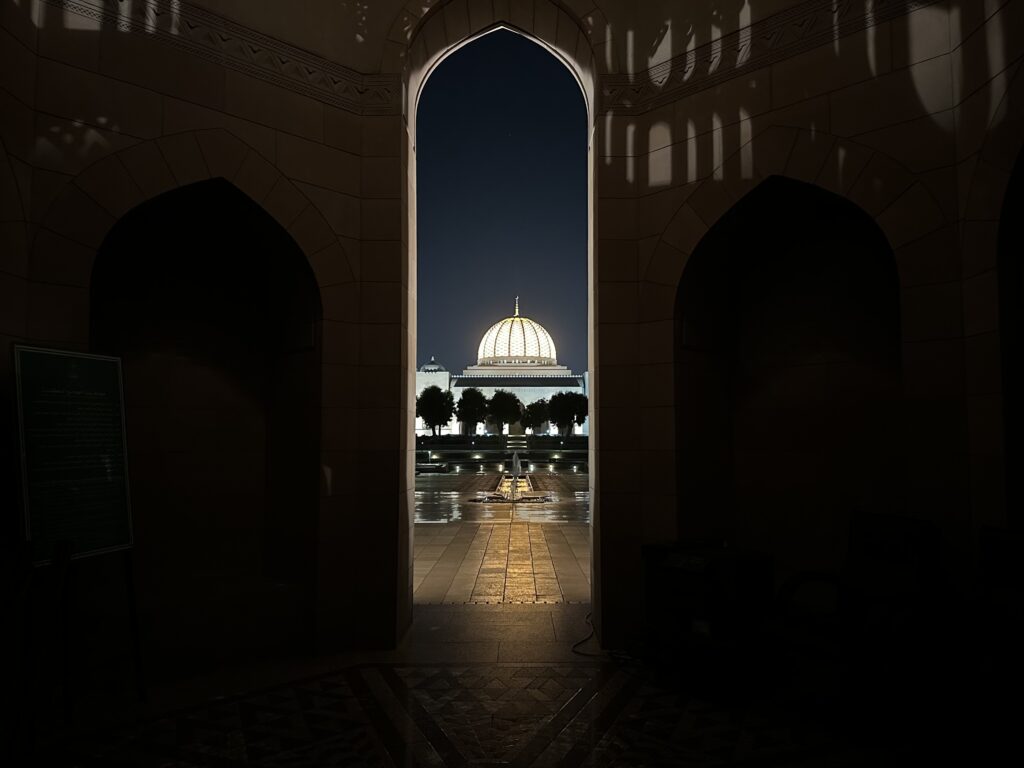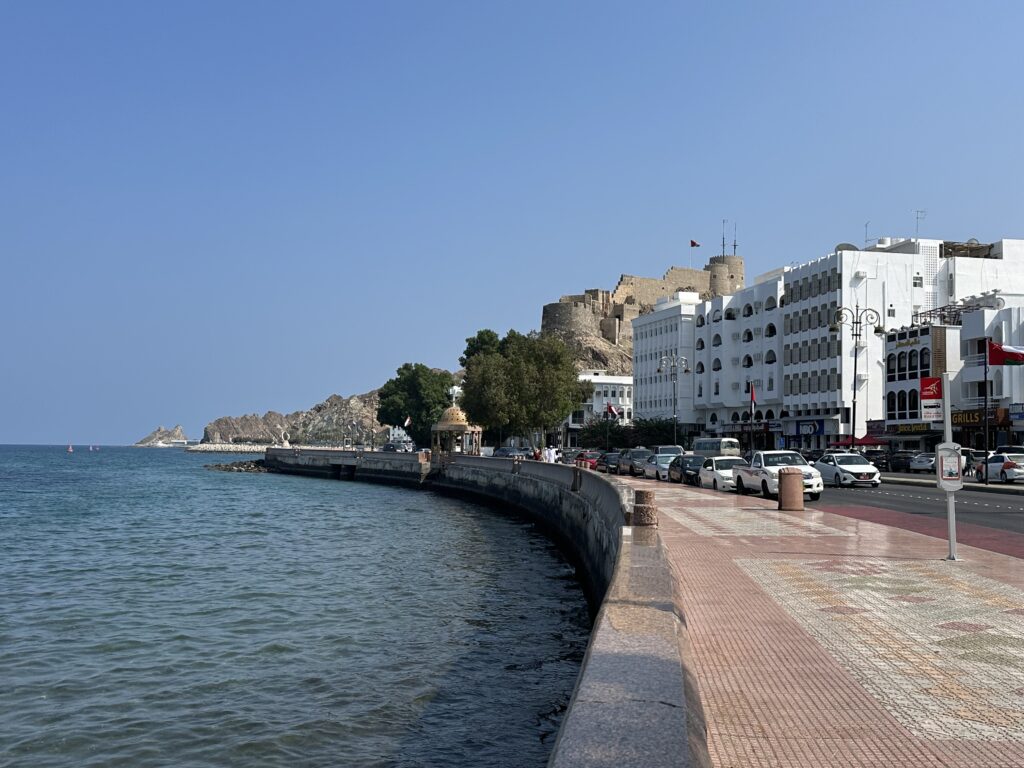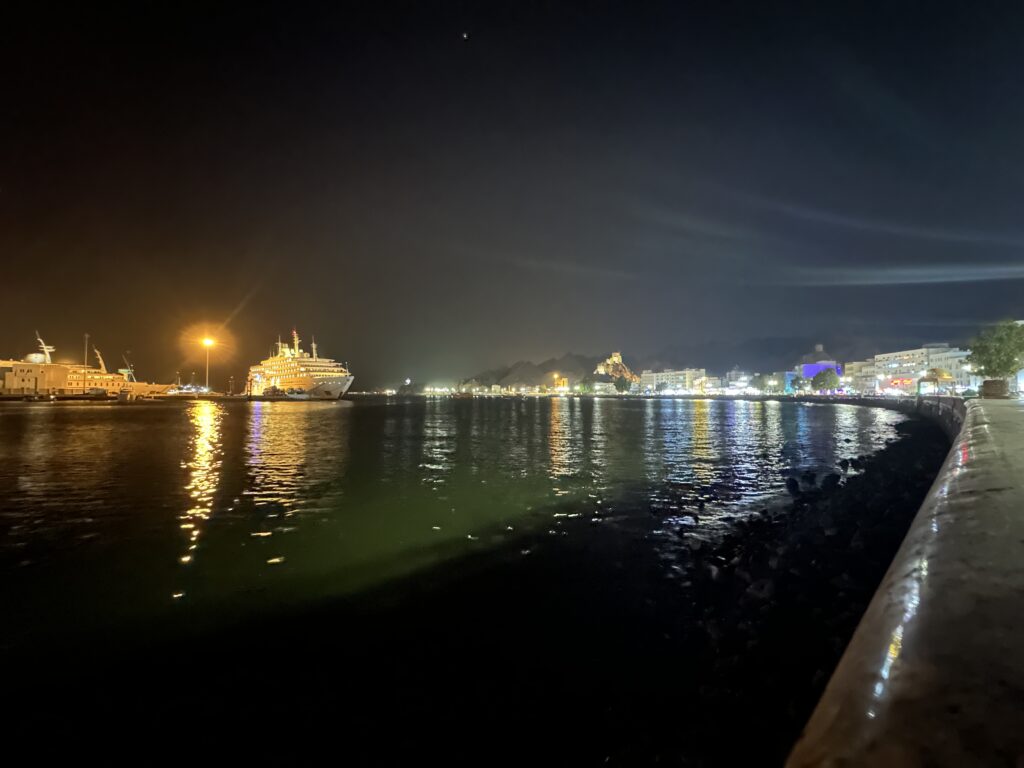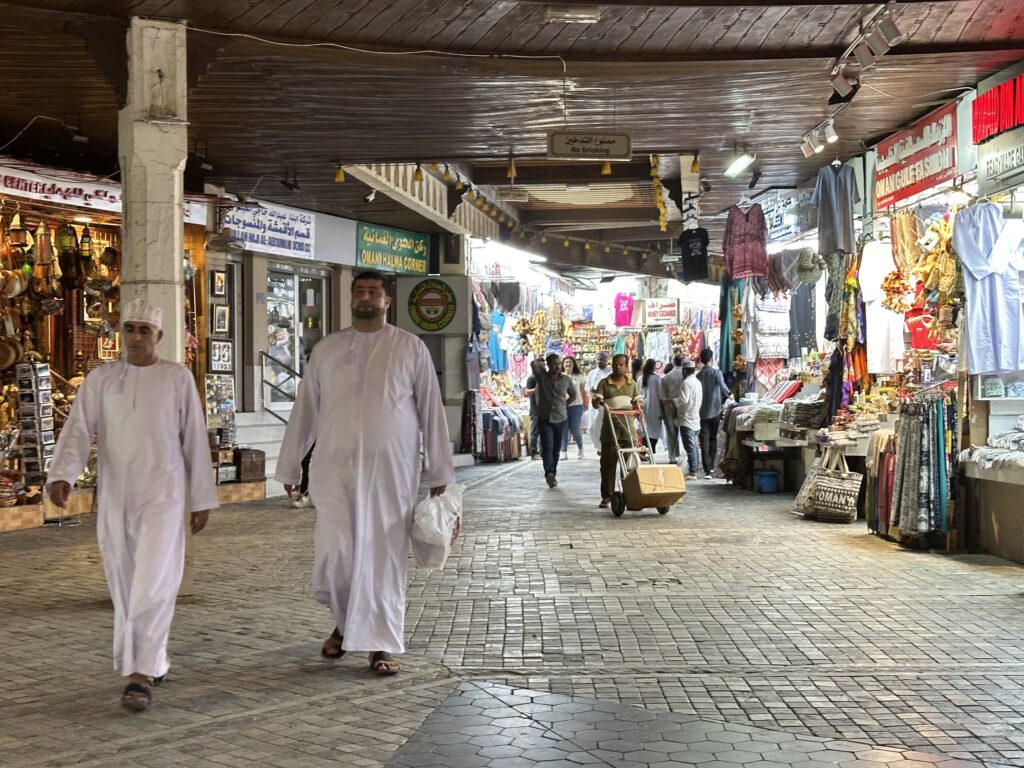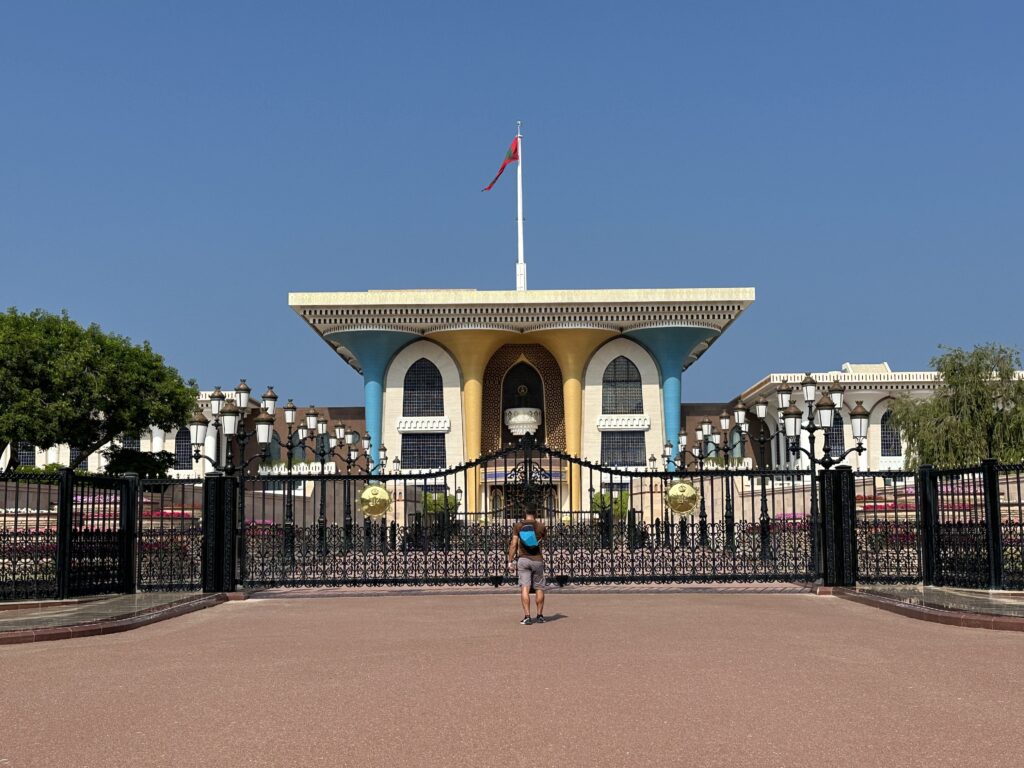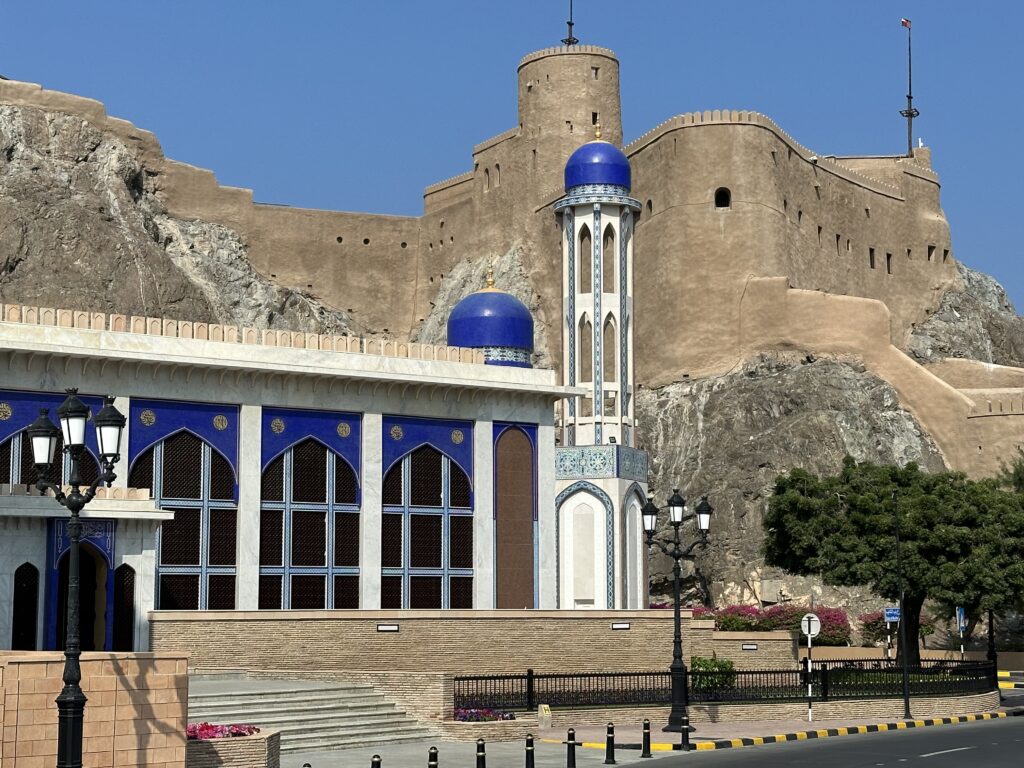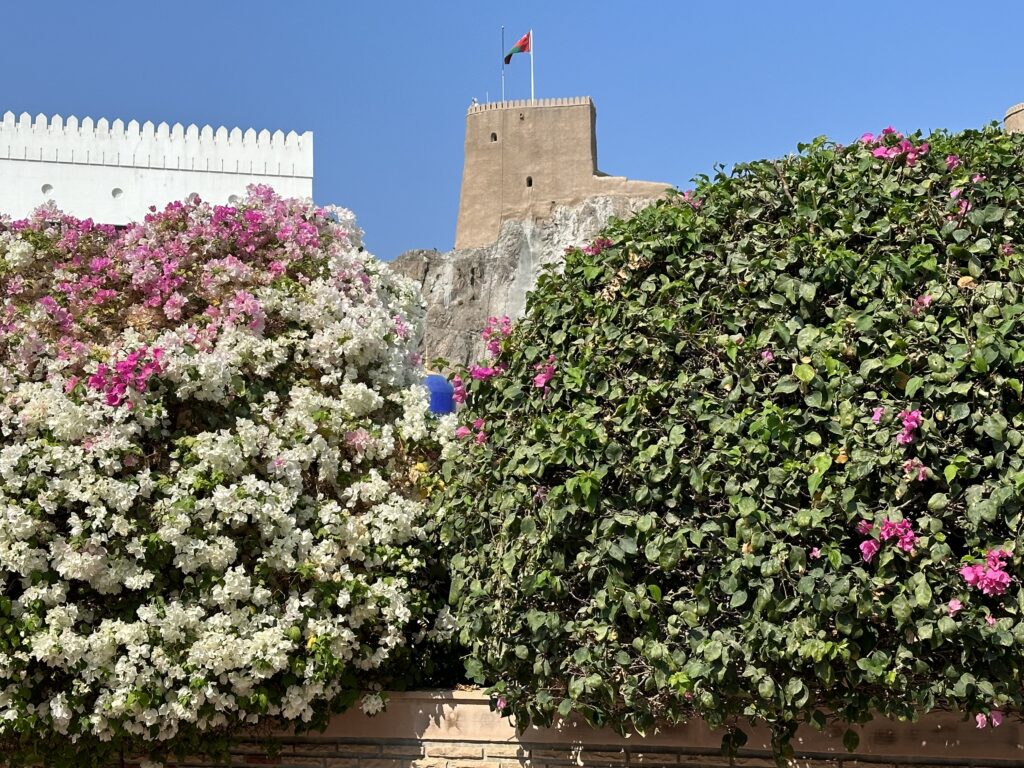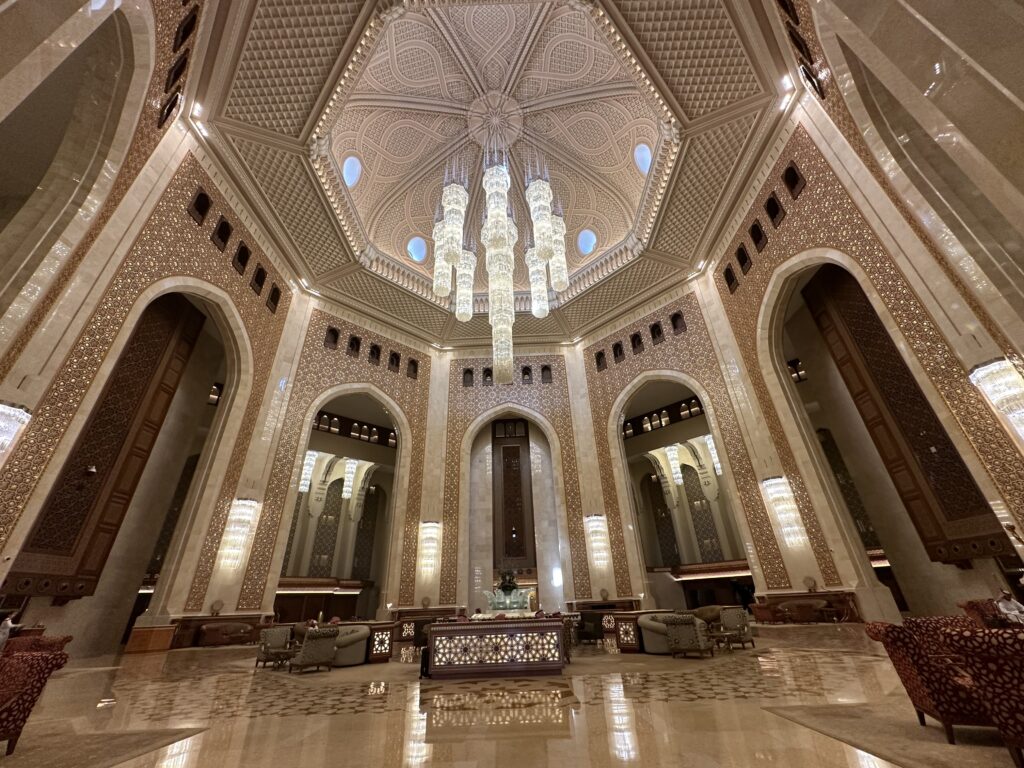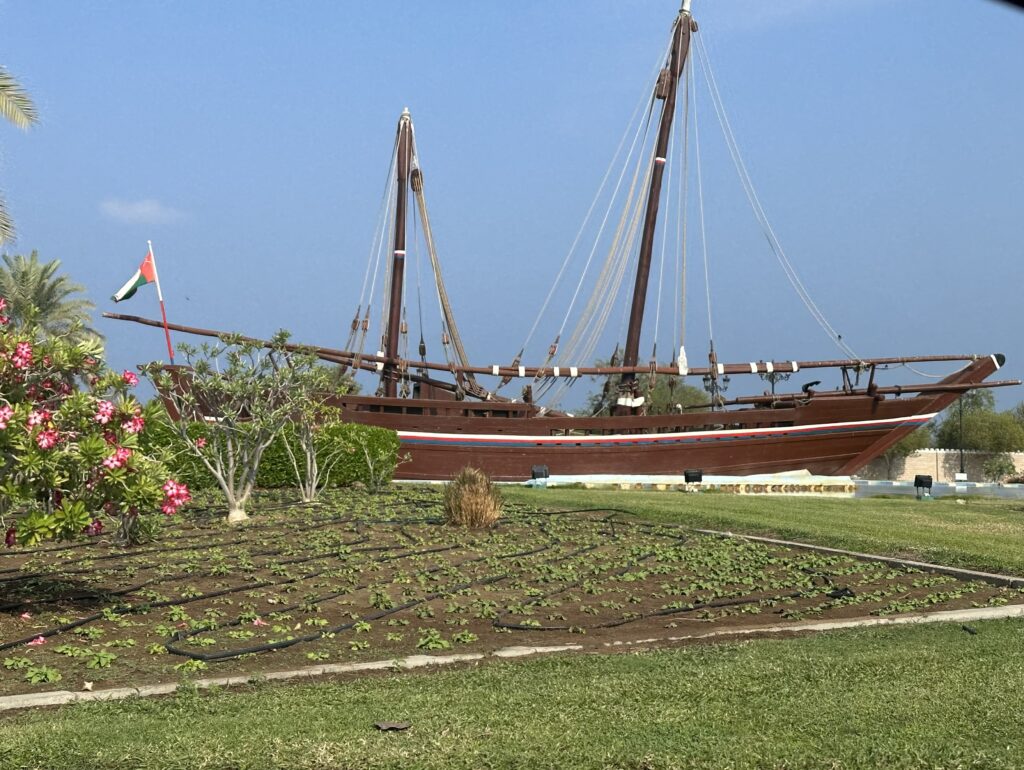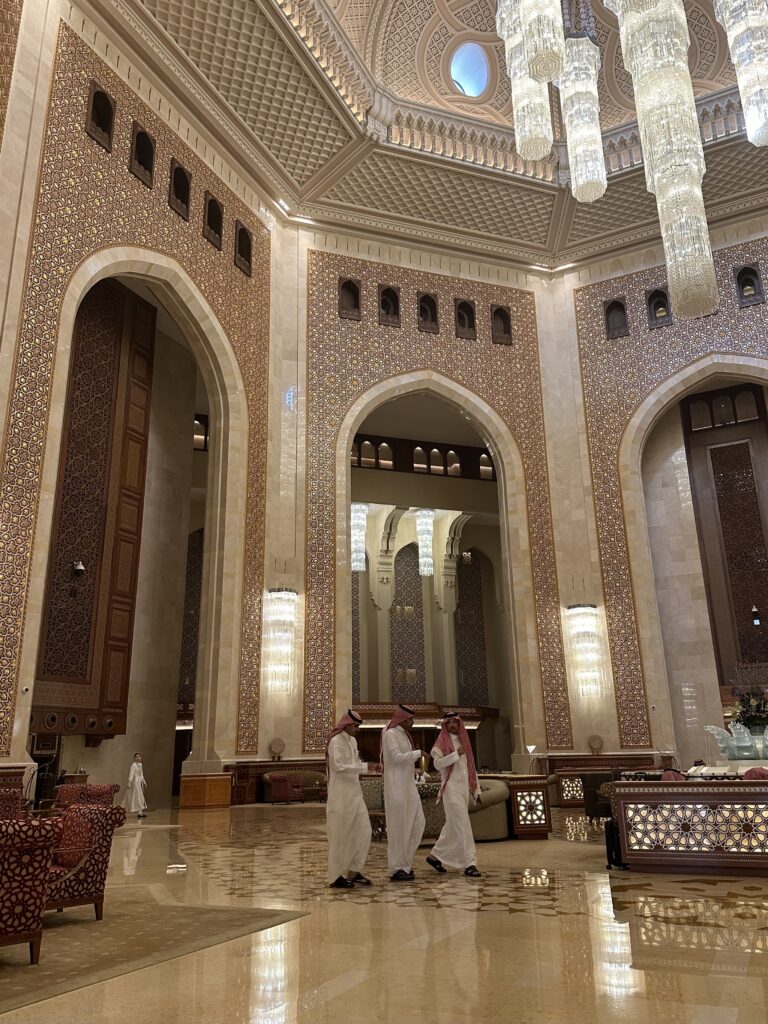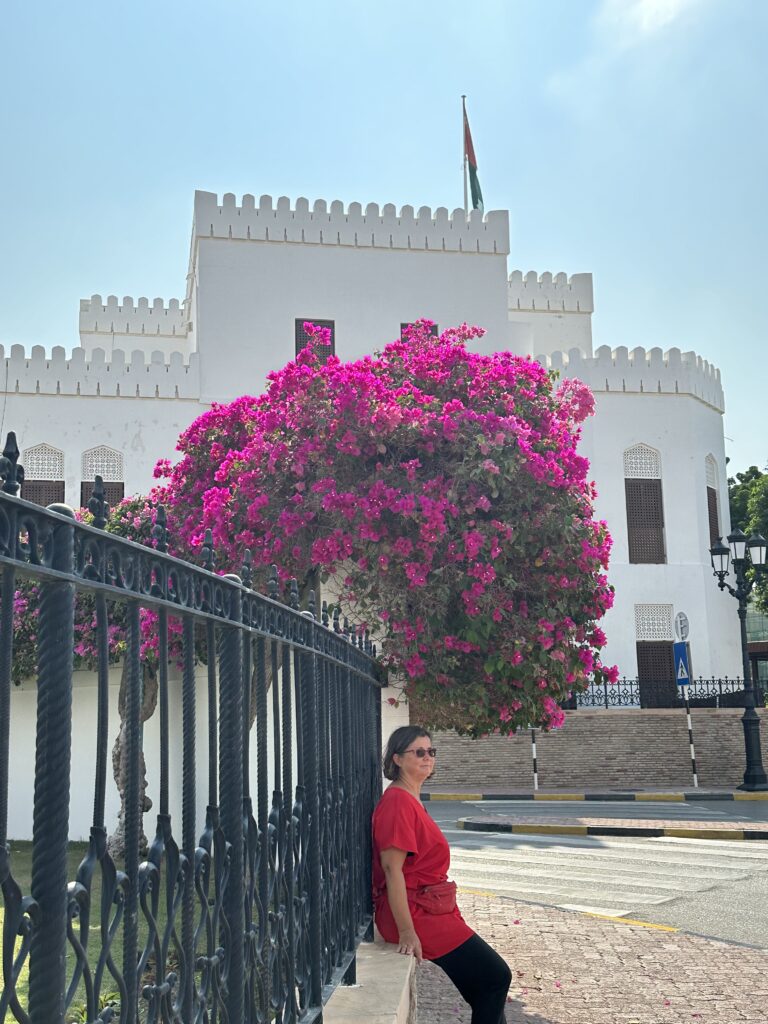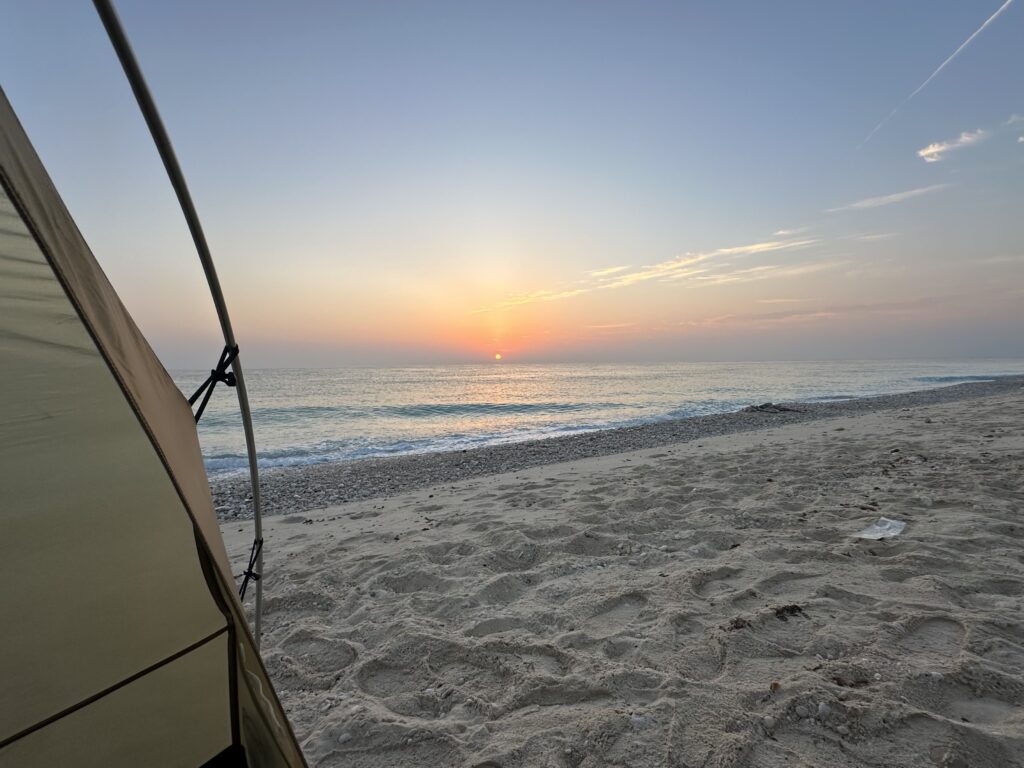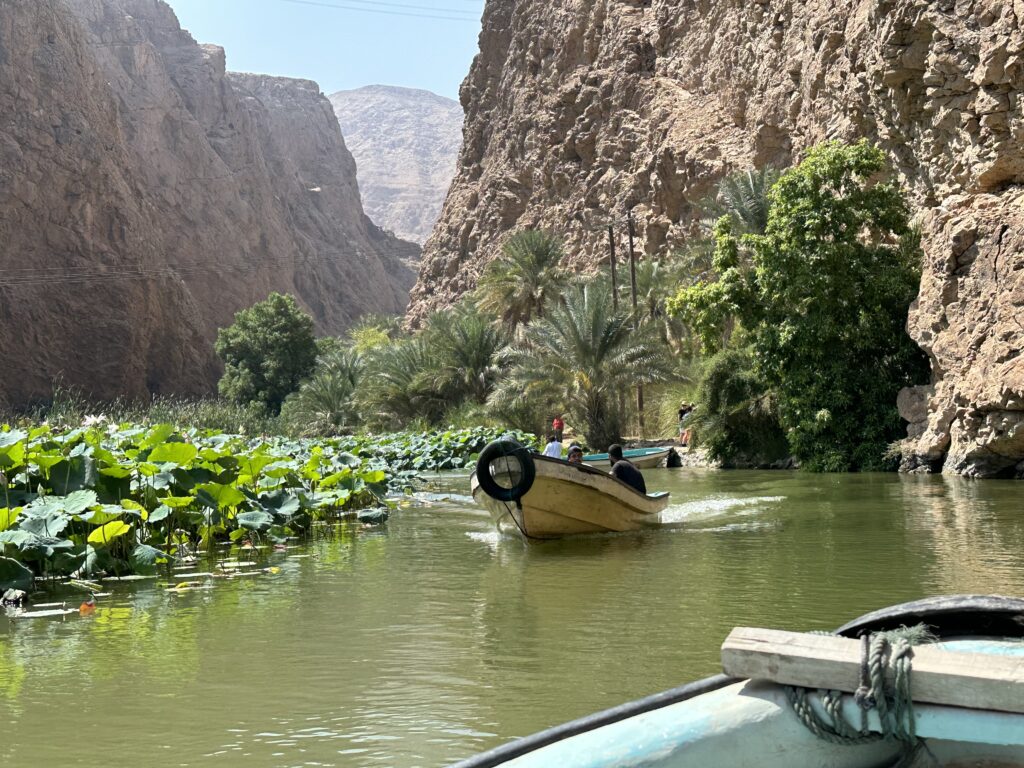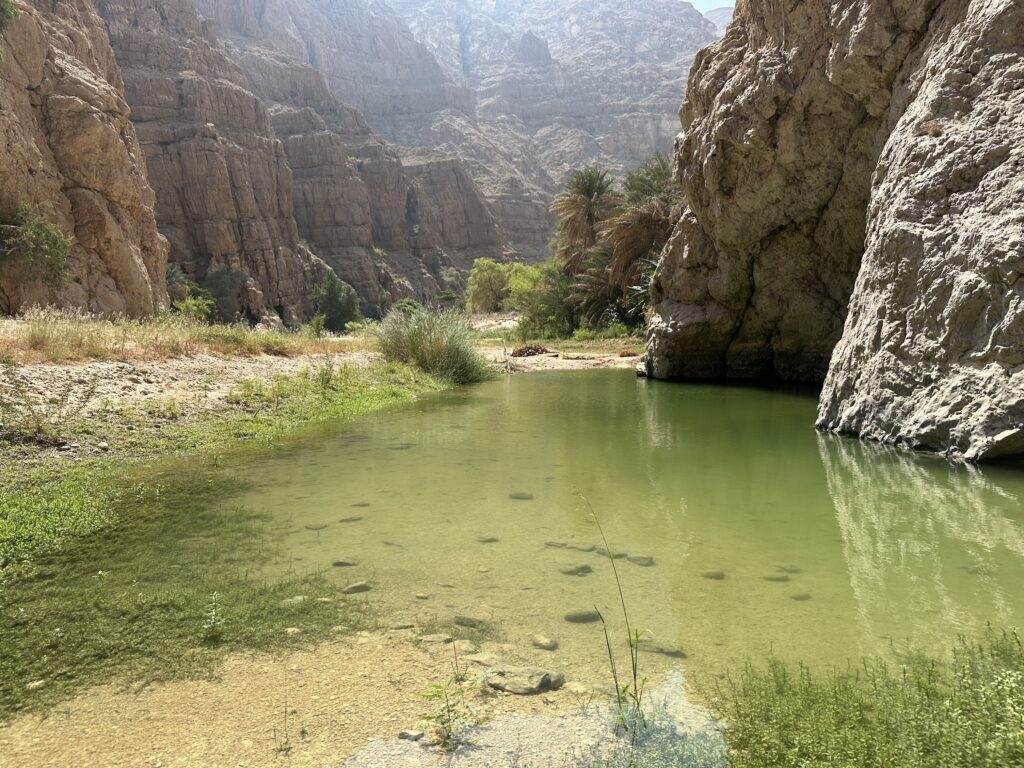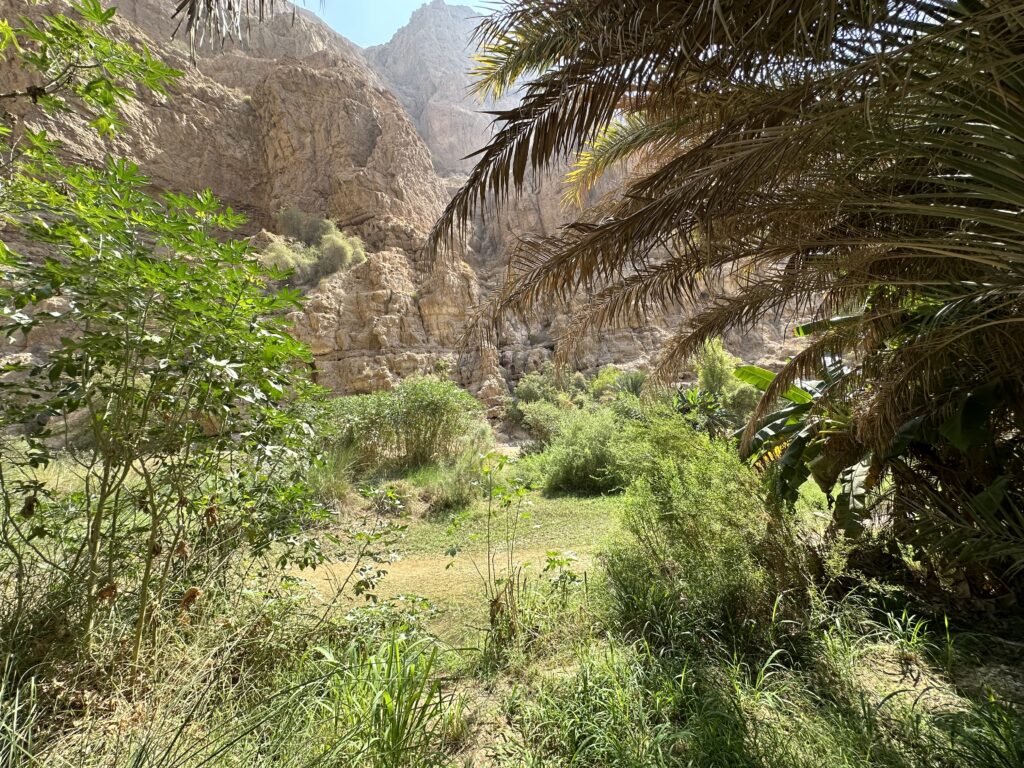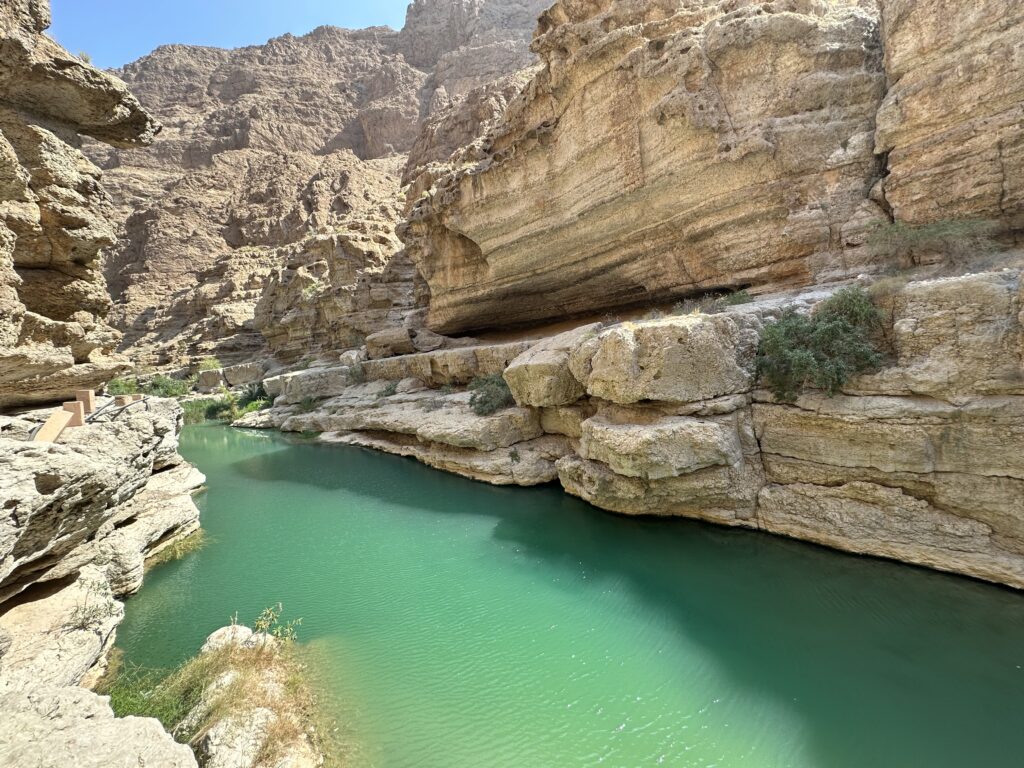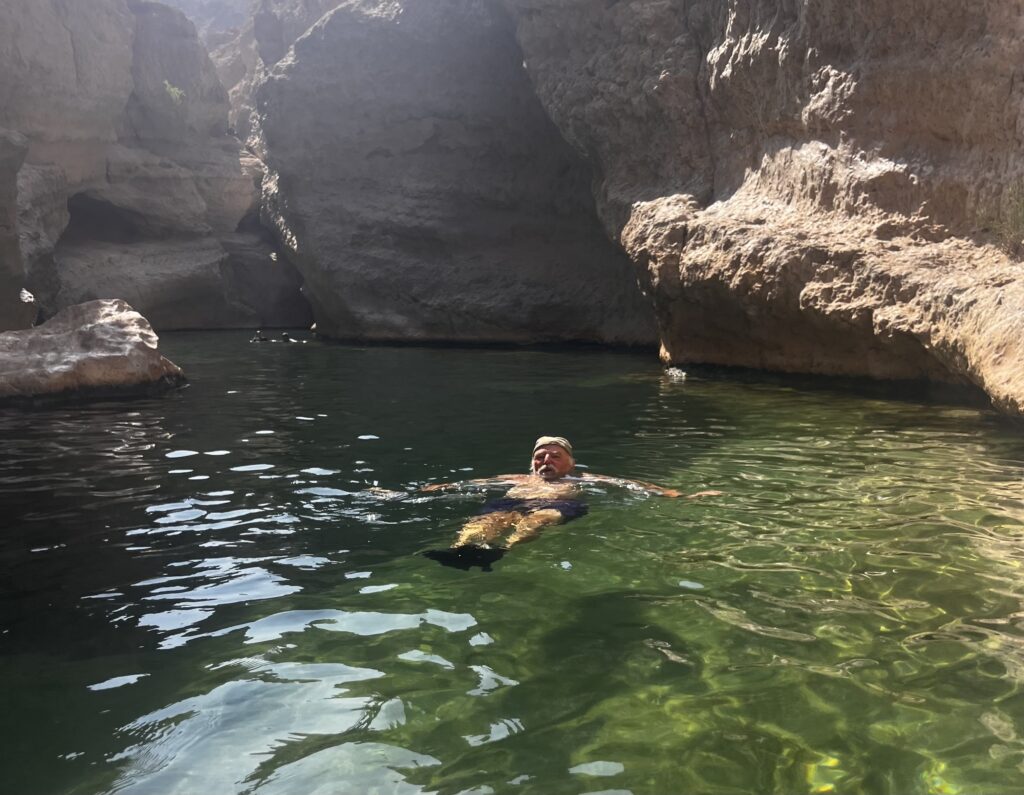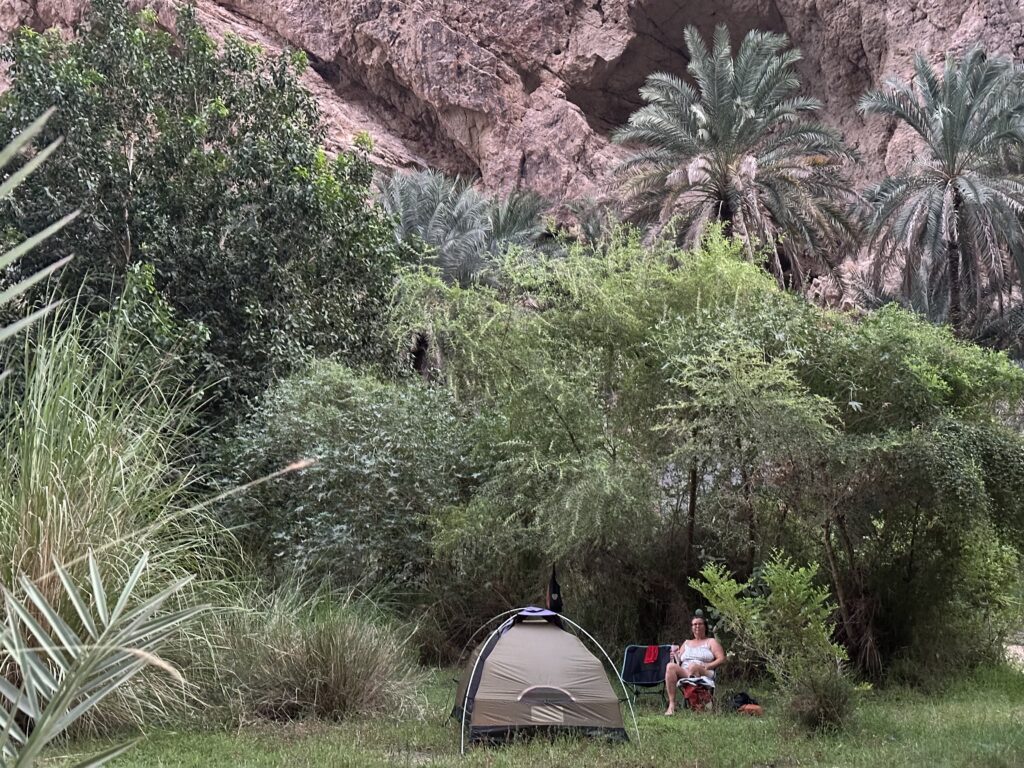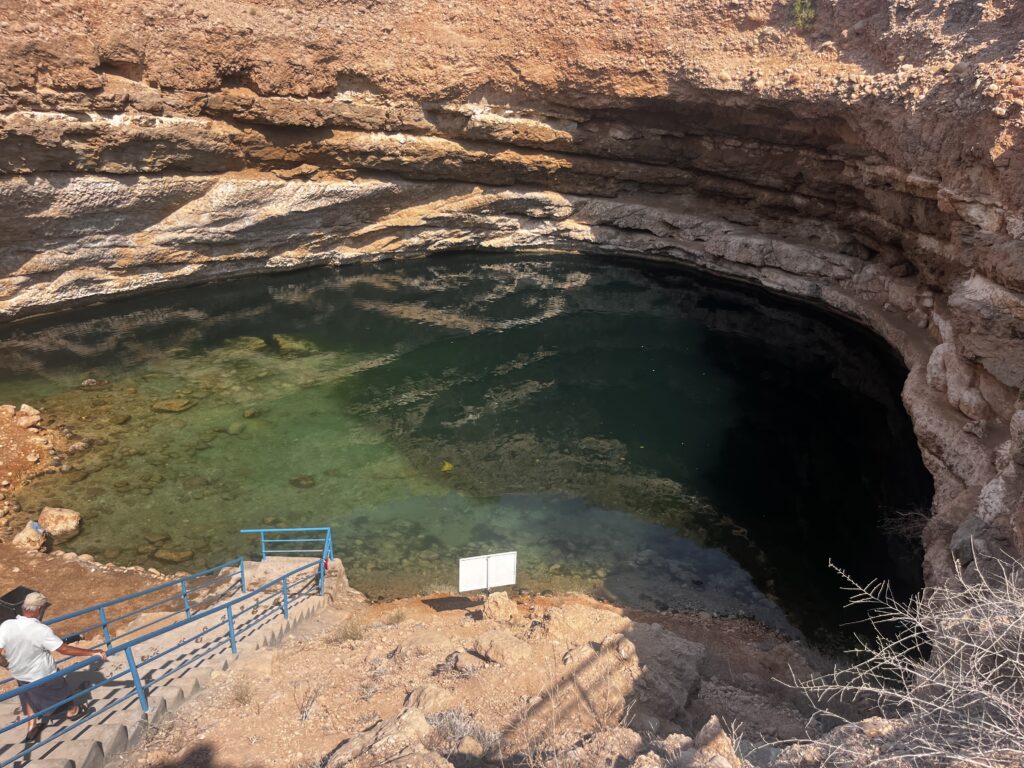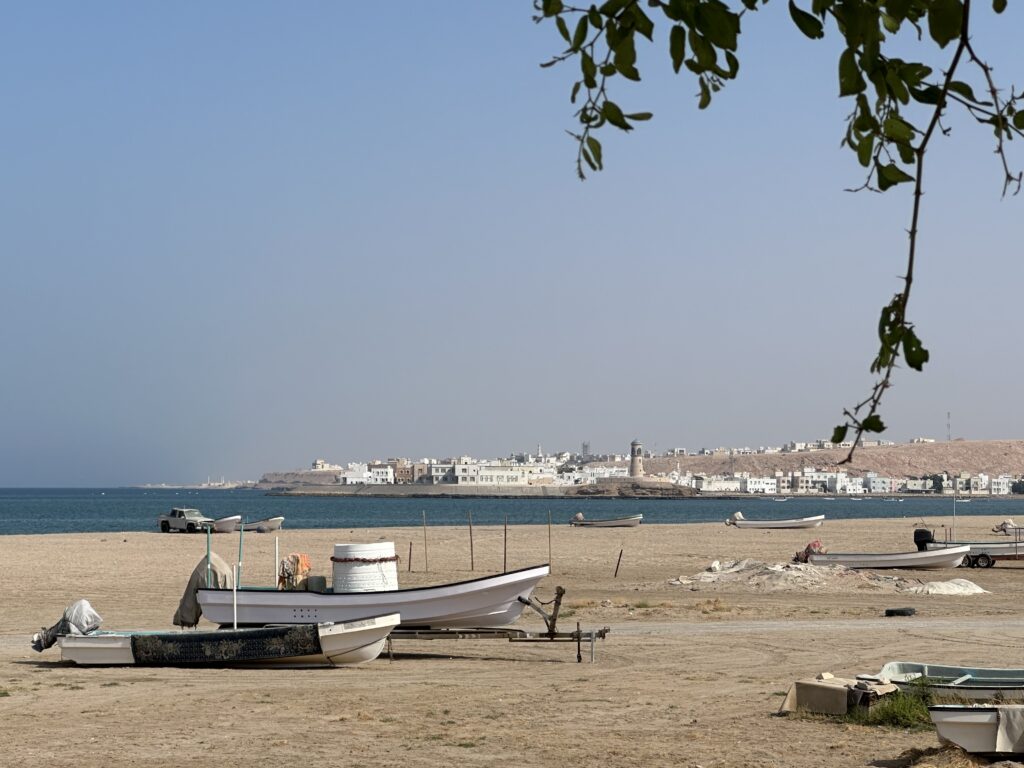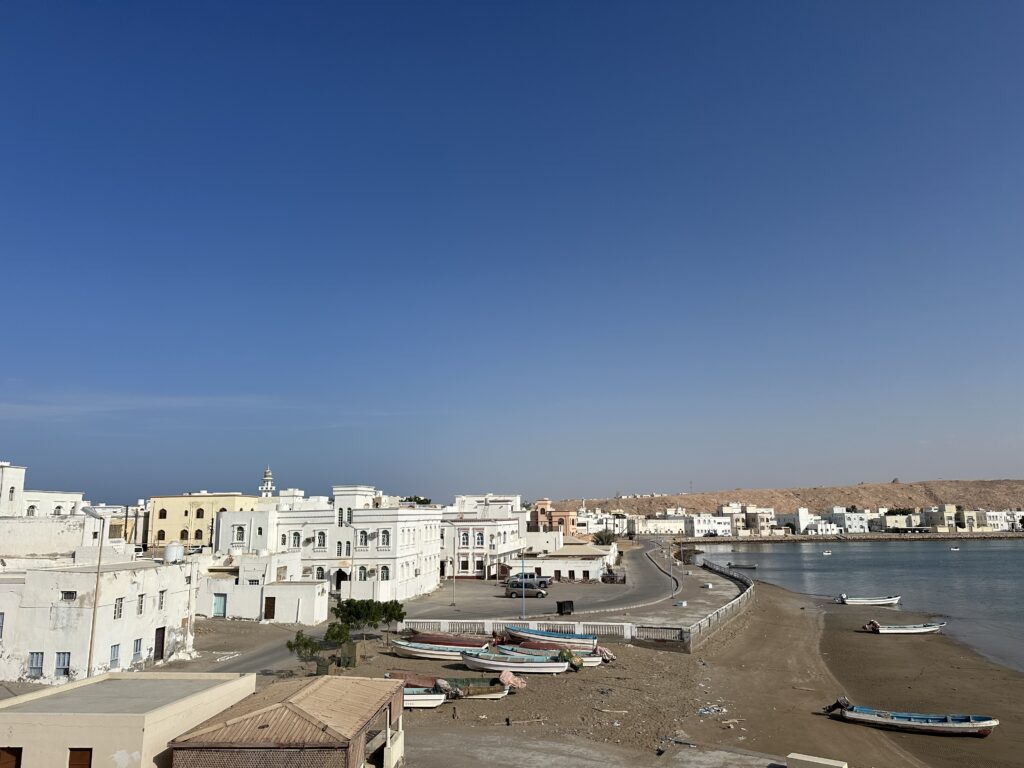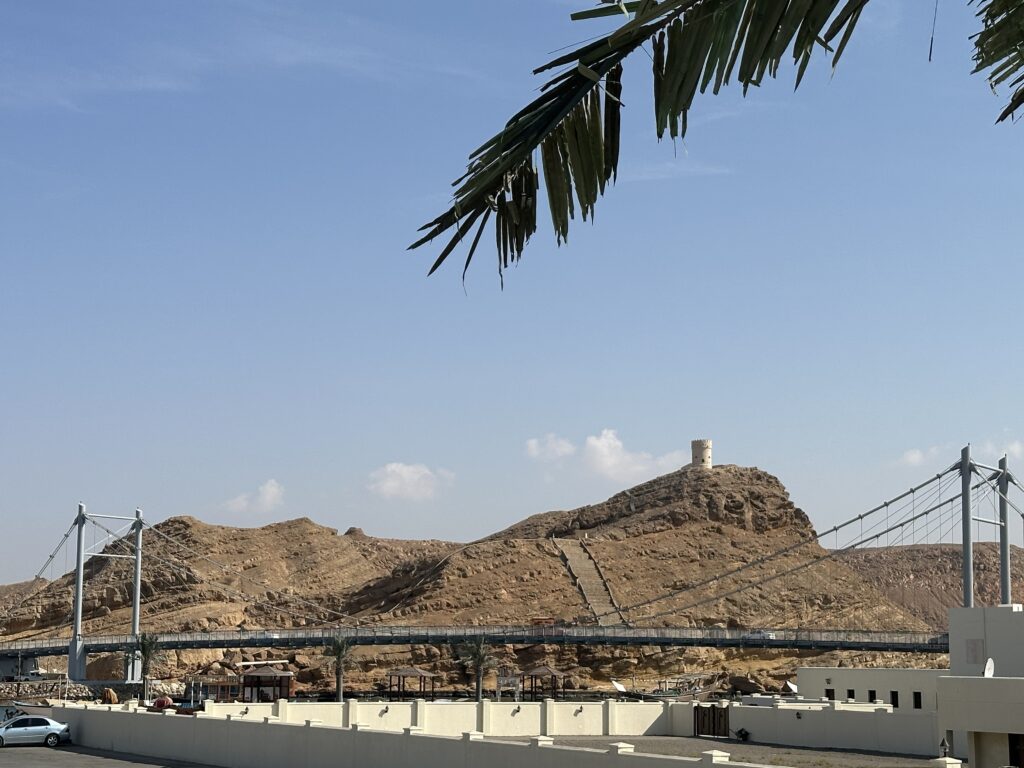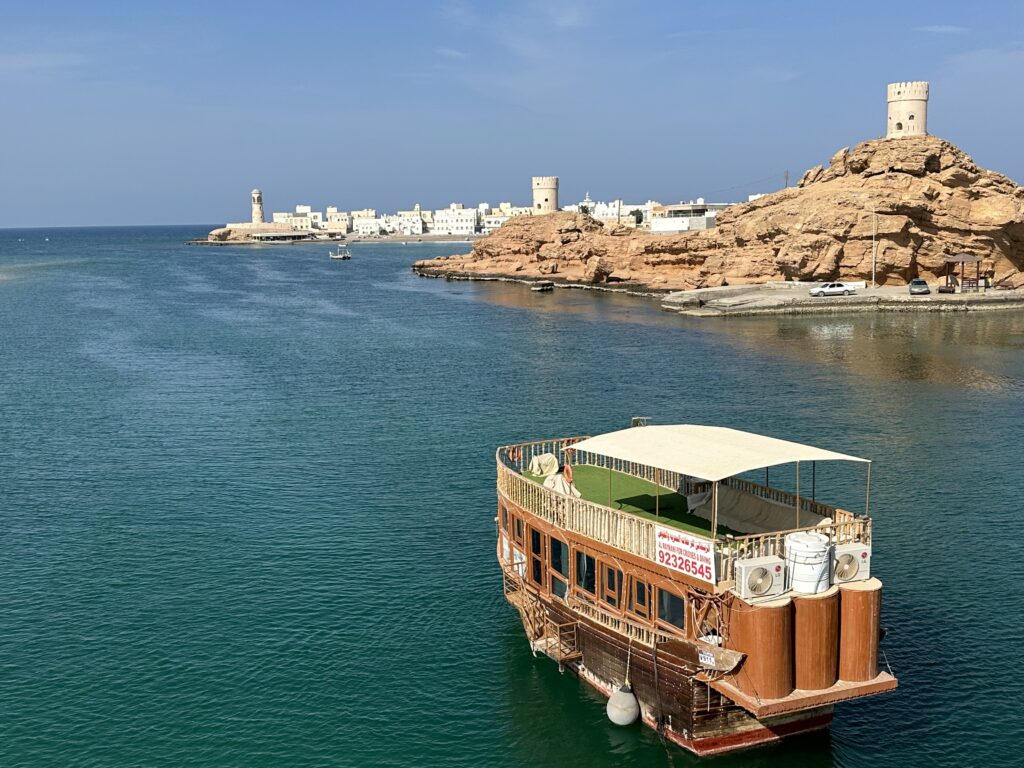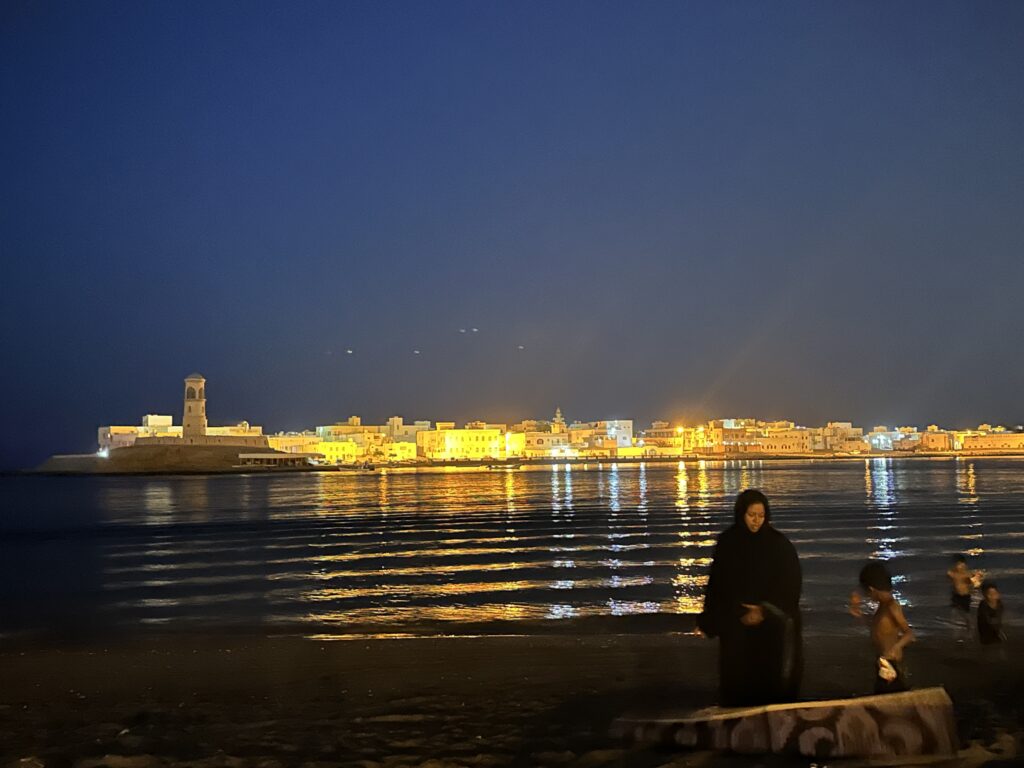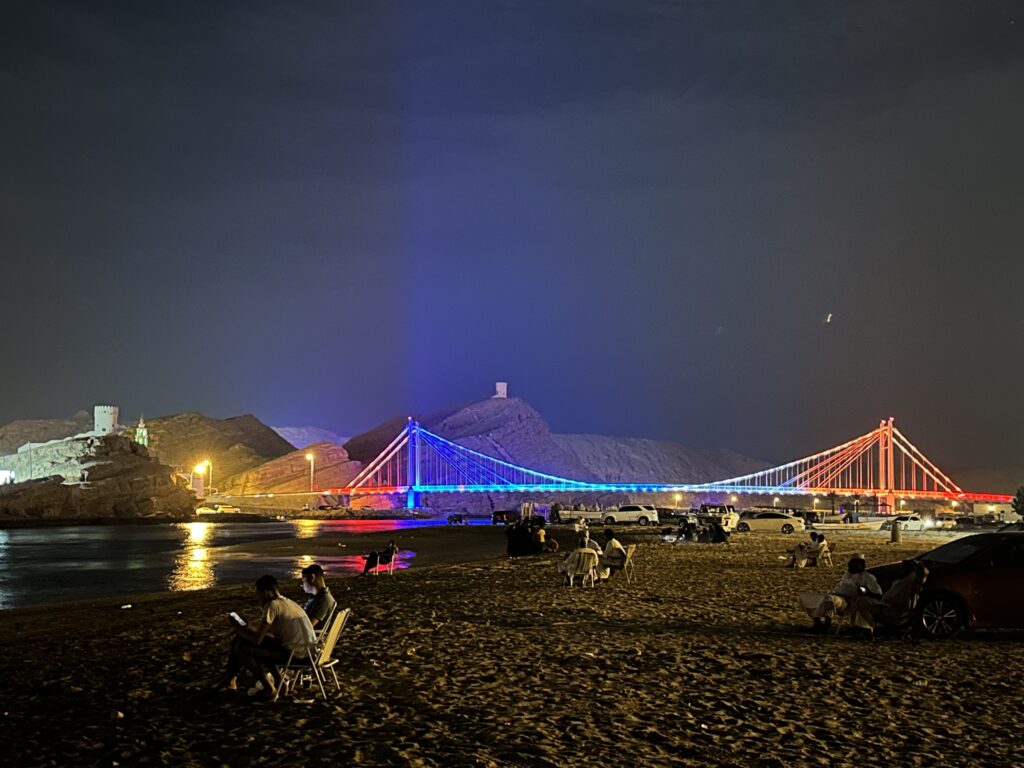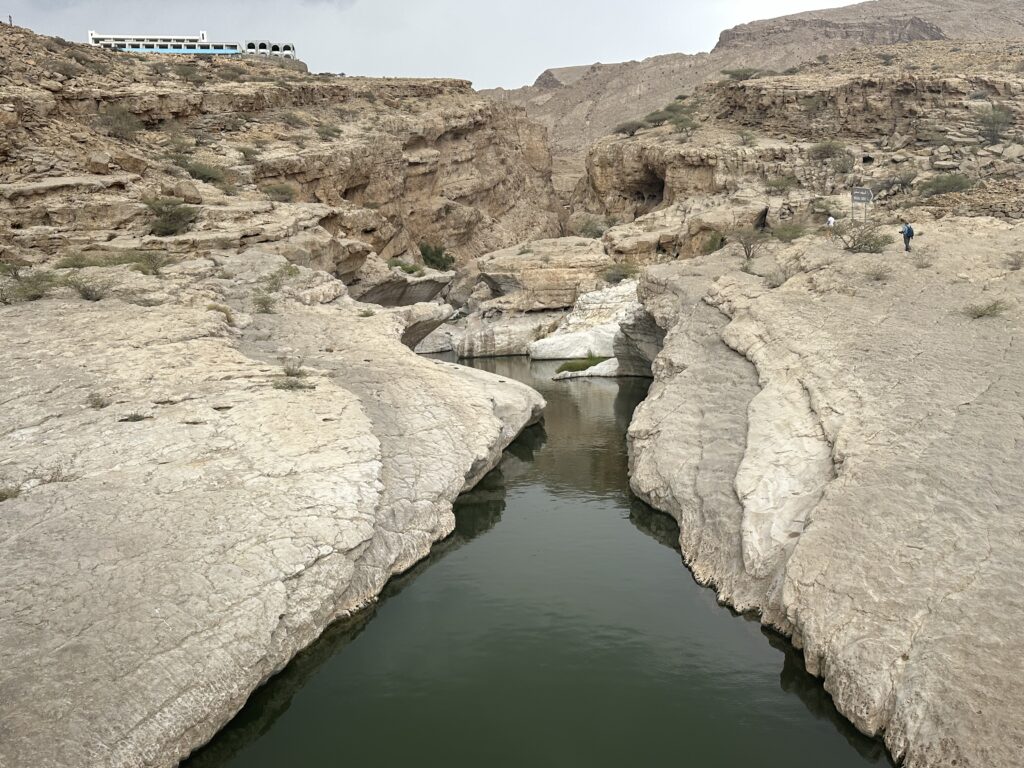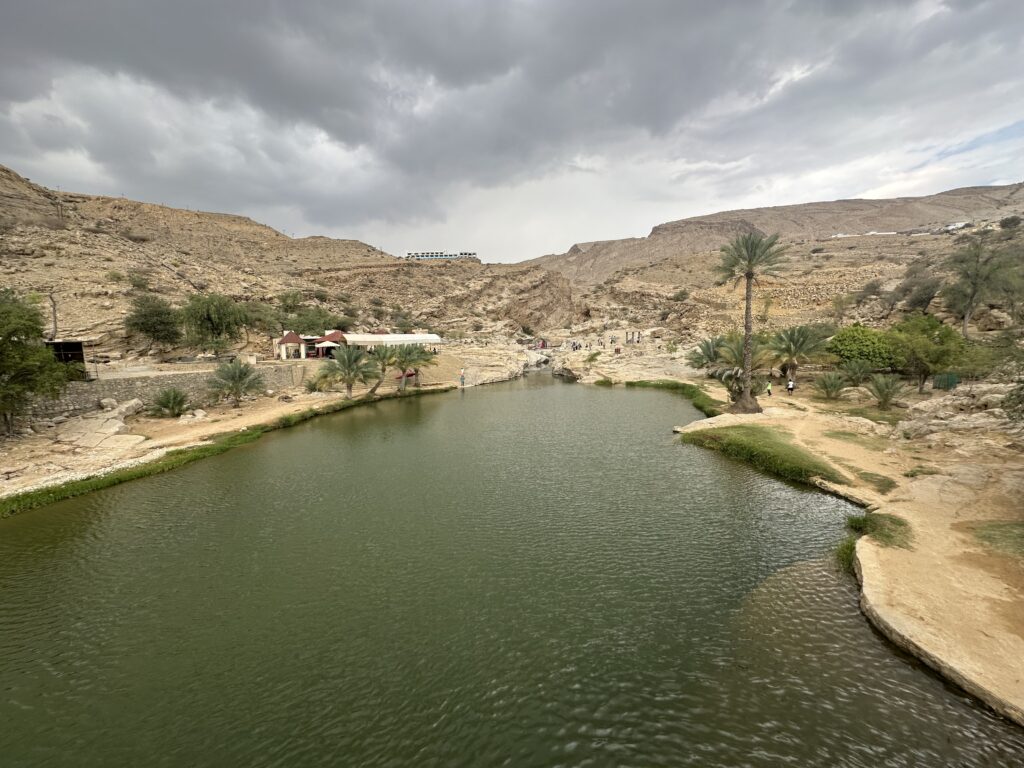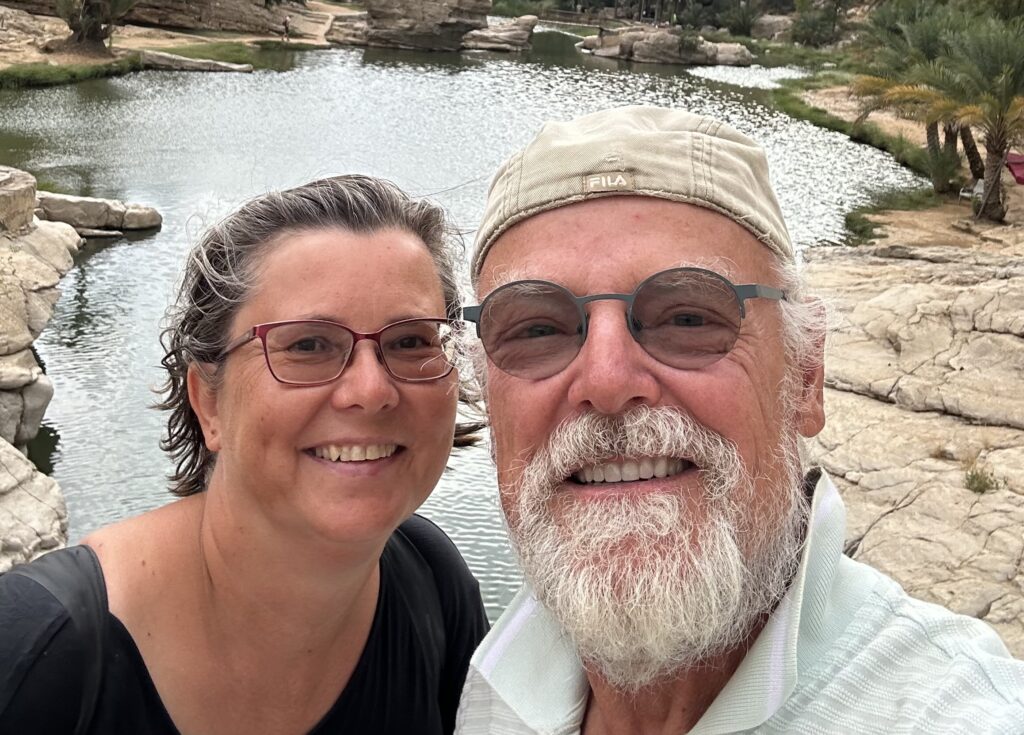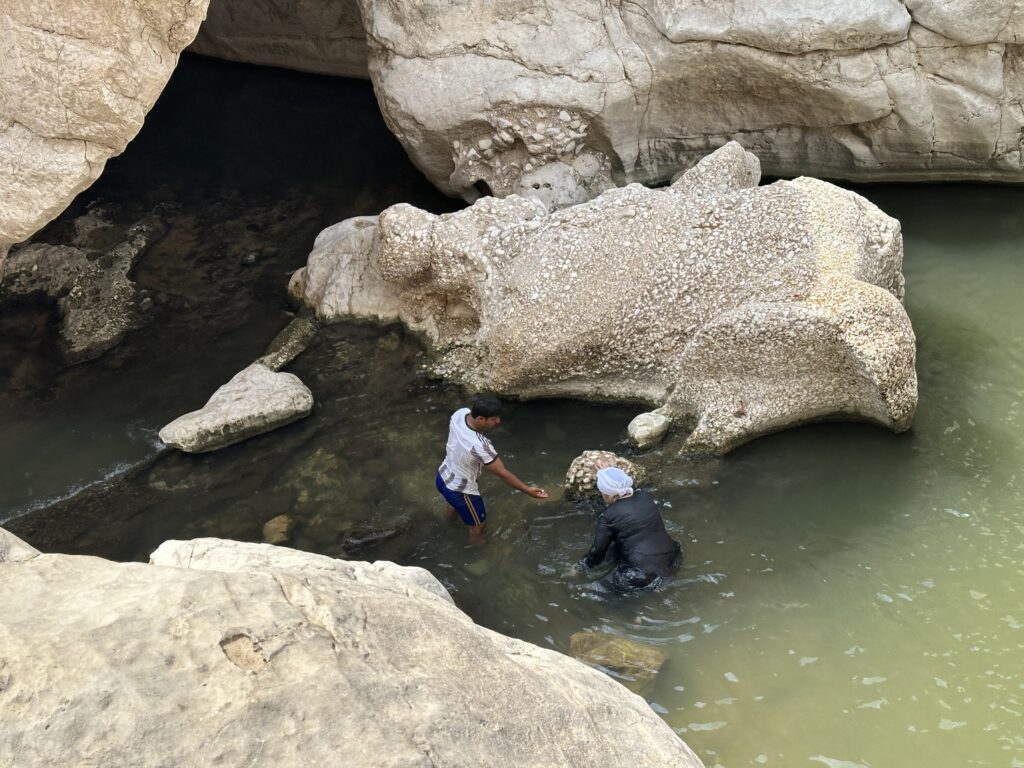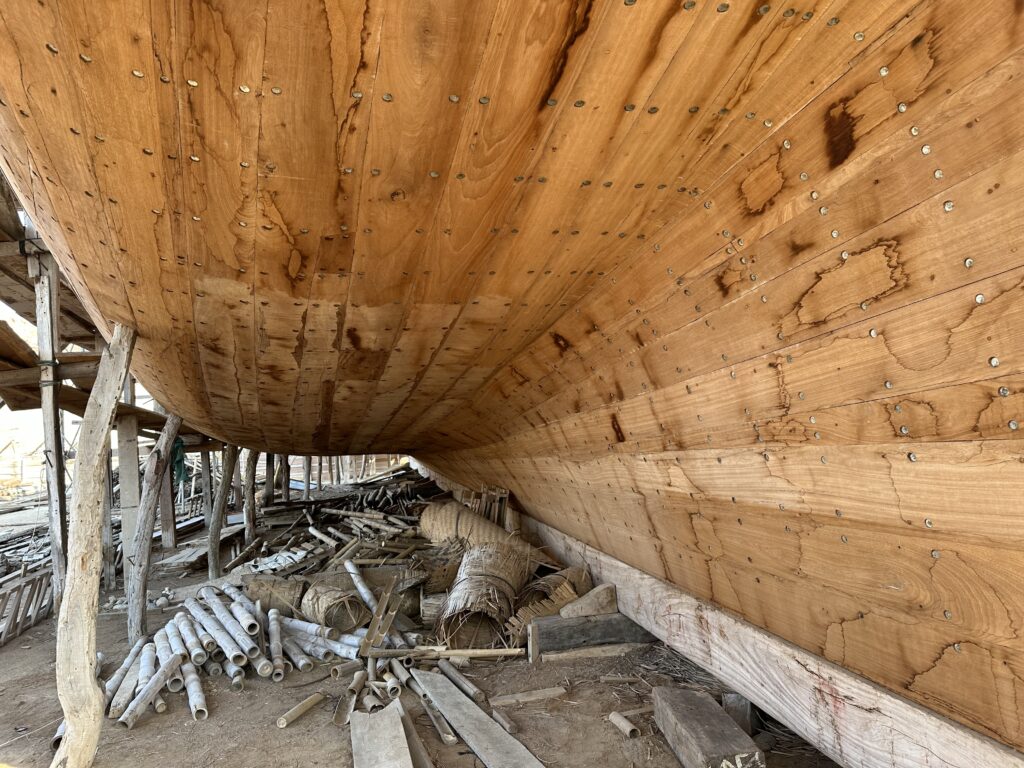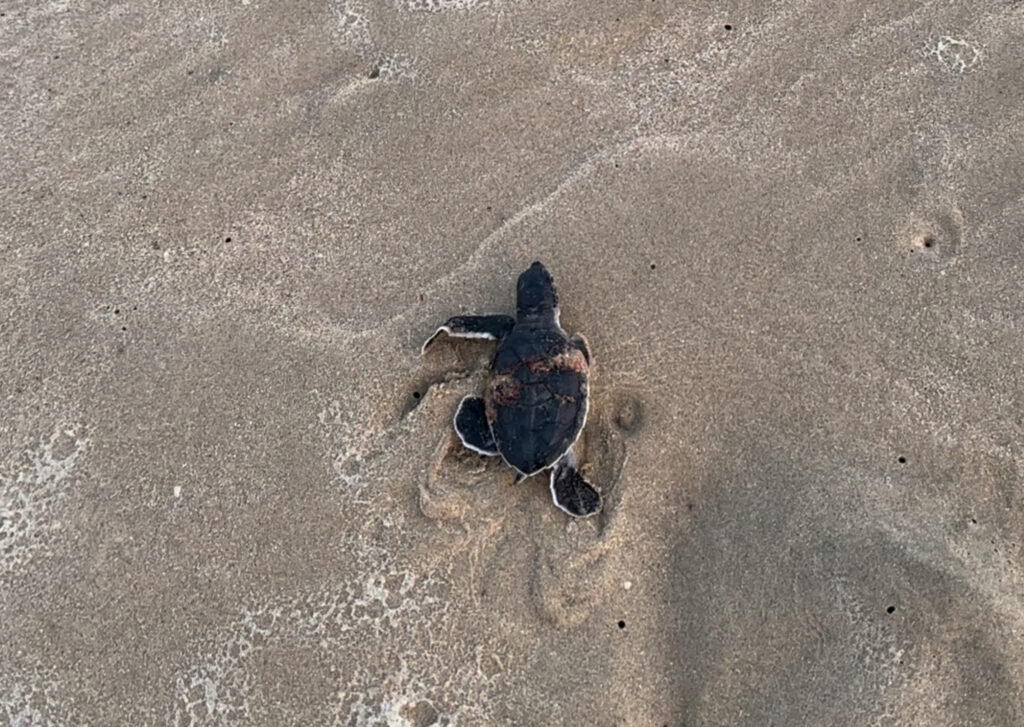18.-28.10.2023
Muscat and the north coast
Click photos for large size

Surrounded by a foothill of the Hajar Mountains lies the once smallest capital city in the world, the picturesque, sparkling clean, glistening white Muscat. When I first visited a good 20 years ago, Muscat was still a rather dreamy small town with a distinctly Arabian Nights flair, but today it has all the attributes of a modern metropolis with the exception of tall skyscrapers. Generously and elegantly designed motorways that fit into the topography bear witness to the high level of technical expertise of Oman’s road builders, which would later be demonstrated in impressive form. Meticulously tended parks and green spaces reminiscent of English gardens and Loire castles and street borders with lushly flowering bougainvillea and oleander bushes add a splash of colour to the cityscape.
This cityscape is characterised by modern, but despite some examples of bold architecture, mostly stringently designed buildings based on traditional stylistic elements and thus has a very individual character – a result of the policy practised by Sultan Qabus bin Said, who died three years ago, and his successor, Sultan Haitham bin Tariq Al Said, of carefully transitioning the country into the modern age without jeopardising its own identity. A development with architectural superlatives or even excesses such as in the neighbouring United Emirates is unthinkable here. However, the Big Sultan Qabus Mosque, which was modelled on the Sultan Qabus Mosque in Salalah, the Sultan’s home town, is outstanding.
We enjoy the charm of Old Muscat and Mutrah with its lively souq and the marvellous Corniche, which is now home to gleaming luxury cruisers, unlike some twenty years ago when traditional dhows unloaded their cargo from overseas directly onto the pier. In addition to the dhow, which is now only anchored as a photo motif, magnificent yachts belonging to the Sultan and warships are now moored in the small harbour, where cafés and restaurants are lined up along the waterfront. In the souq, it is difficult to resist the sometimes slightly intrusive shopping offers; this is though easier in the gold souq, where ornate jewellery is presented in overwhelming abundance and variety in elegant shops and boutiques.
Particularly impressive is the government district around the closely guarded iconic Sultan’s Palace, surrounded by magnificent parks, and the elegant National Museum. The area is overlooked by the Al Jalil and Al Mirani fortresses, which are enthroned on opposite mountain peaks.
On the north coast stretching eastwards from Muscat, we find a whole range of attractions. Just a short distance away is one of the world’s best hotels, the Al Bustan Palace, part of the Ritz-Carlton group, where I had the pleasure of staying for a few nights 24 years ago. Entering the towering hotel lobby with its ornamental furnishings and decorations is like entering a cathedral.
Soon, however, further east, the urban character increasingly gives way to a landscape characterised by barren, rugged mountains and sparse vegetation, which nevertheless has its own beauty. We set up camp on the wide, white Fins beach and even dare to swim in the waves unclothed because of the solitude there.
An absolute highlight of our trip is the visit to Wadi Shab, which can only be accessed by a short ferry ride. The subsequent 45 minute walk, which is quite arduous in the heat of the day, is greatly rewarded by the sensation of bathing in the wadi basins. The action culminates in a dive through a 30 cm wide crevice into a bottomless cave fed by a lively waterfall. It takes a certain amount of courage to swim through this bottleneck.
Our enthusiasm for this natural wonder is so great that we decide to pitch our tent in the wadi, spend the night there and be the first to repeat the experience the next morning. Despite a sleep-robbing plague of mosquitoes in the first half of the night, we don’t leave this marvellous spot until the afternoon.
On the way to the fishing town of Sur, it is worth making a detour to the Bimmah Sinkhole, a doline (karst funnel) in a pretty park, which also invites you to swim. Young daredevils jump elegantly from the edge, which is 20 metres above the water level, to the applause of the tourists.
We cannot understand a local’s comment that Sur is not worth a visit; on the contrary, we like it there so much that we extend our stay and pitch our tent on the beach for several nights with a view of the panorama of the village of Al Ayash on the opposite side of the lagoon, dominated by the old lighthouse. In the morning, before sunrise, countless dhow leave the harbour and lagoon to catch fish and only return in the evening after dark, while small colourfully lit and sonicated boats ferry tourists back and forth.
We interrupt our stay there with an excursion to the more touristy Wadi Bani Khalid, from which we are soon driven away again due to the threat of a thunderstorm and the danger of flooding, and conclude our visit with a tour of one of the dhow shipyards still operating in the traditional way, for which Sur still has a certain significance.

At the easternmost point of the Arabian Peninsula in Ras Al Hadd, we stay in the immediate vicinity of a now decaying WWII airfield in order to observe the laying of eggs and the hatching of the green sea turtle on the local beaches. The sighting of fresh traces of egg laying and a single baby turtle, obviously injured by a seagull attack, on its arduous and probably futile journey into the sea without our support remains the only success in this endeavour.

